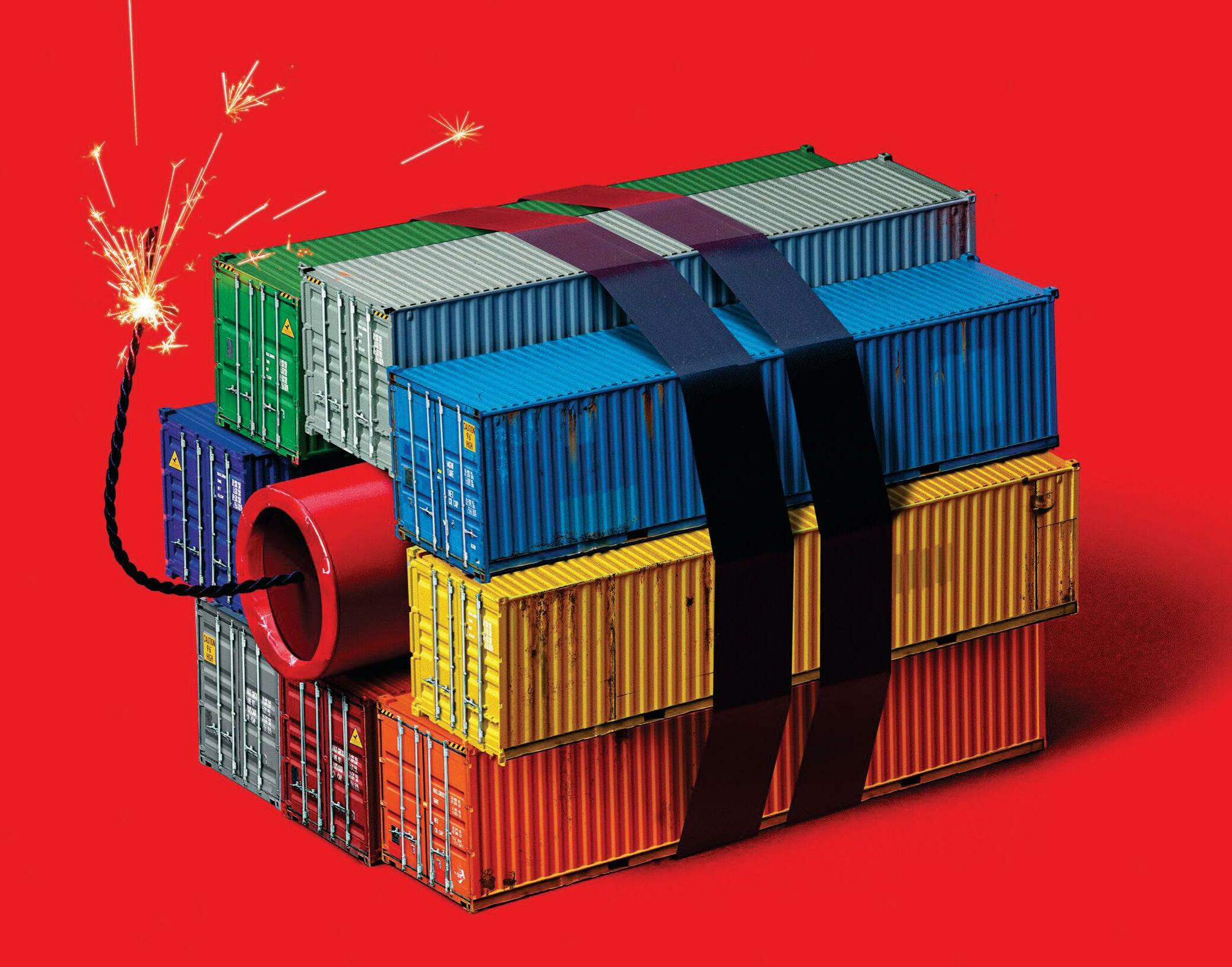STRATEGY HOW TO SURVIVE A TRADE WAR
Fortune US
|April - May 2025
THE FIRST FEW MONTHS of President Donald Trump 2.0 have drawn comparisons to the deregulation era of Ronald Reagan, the industrial policy of Alexander Hamilton, the roaring ebullience of the 1920s, the fervid patriotism of the 1950s, and the harsh cultural divisions of the 1960s.

But when it comes to one of Trump’s signature policy initiatives, tariffs on foreign goods entering America, the precedent in history is clear: The increases in tariffs imposed or suggested by Trump would bring U.S. import taxes to a level last seen some 80 years ago, in the mid-1940s. Those were the last years of a protectionist era in U.S. trade policy, which started in the 1920s and endured through the Great Depression and World War II.
The 1947 establishment of the General Agreement on Tariffs and Trade (GATT), which effectively lowered global trade barriers, brought that chapter to a close, reducing tariffs to promote international trade. Lowering trade barriers after a nearly apocalyptic war left most of the U.S.’s industrialized peers in disarray was a clear benefit for American manufacturers, and the GATT set off the era of globalization that has only accelerated since. The GATT evolved into the World Trade Organization and was a precursor to the North American Free Trade Agreement that went into effect in 1994, supercharging the flow of goods between the U.S., Canada, and Mexico.
We appear to be in the midst of another sea change in trade policy. Trump’s ever-shifting America First agenda has provoked an escalating trade war with the U.S.’s three largest trading partners: its two North American neighbors and China. And it penalizes the raw materials for some of the most American of goods— big cars, beer cans, homes, computer processors. Even the universally reviled Smoot-Hawley Tariff Act of 1930, which imposed a maximum 41% levy, affected only 1.4% of GDP, while Trump's promised tariffs as of March affect about 5% of the U.S. economy, or roughly $1.5 trillion worth of goods, according to the Peterson Institute for International Economics.
Denne historien er fra April - May 2025-utgaven av Fortune US.
Abonner på Magzter GOLD for å få tilgang til tusenvis av kuraterte premiumhistorier og over 9000 magasiner og aviser.
Allerede abonnent? Logg på
FLERE HISTORIER FRA Fortune US

Fortune US
GET READY TO OWN A TOKENIZED PORTFOLIO
A BLOCKCHAIN \"FREIGHT TRAIN\" IS ALREADY REMAKING WALL STREET'S FINANCIAL PLUMBING. IT COULD MAKE TRADING EVEN FASTER AND CHEAPER
6 mins
December 2025 - January 2026
Fortune US
RESOURCES HOW RARE EARTHS BECAME GROUND ZERO IN THE U.S.-CHINA RIVALRY
THE WATERSHED moment came in July when the federal government became the largest shareholder of MP Materials, a California miner of rare earth elements.
2 mins
December 2025 - January 2026

Fortune US
PASSIONS A BLISSFUL ESCAPE FROM DECISION FATIGUE
THE TASTING MENU at Uberto ends, like many others at restaurants of this caliber, with mignardises.
4 mins
December 2025 - January 2026

Fortune US
JAMIE DIMON OF JPMORGAN CHASE ON STEERING AMERICA'S BIGGEST BANK THROUGH 'INFLATIONARY' TIMES
CEO JAMIE DIMON has led JPMorgan Chase through periods of rapid change and epic turmoil—and Jan. 1, 2026, will be his 20th anniversary in the role.
6 mins
December 2025 - January 2026

Fortune US
WHAT TO BUY, AND NOT BUY, IN 2026
THREE YEARS OF EUPHORIA IN STOCKS AND OTHER ASSETS HAVE INVESTORS BRACING FOR TROUBLE. HERE'S WHAT TO DO IF BAD NEWS ARRIVES.
7 mins
December 2025 - January 2026

Fortune US
Breaking the Mold
The Trade Desk's Al-powered platform and open-web ethos has propelled it onto the S&P 500.
2 mins
December 2025 - January 2026

Fortune US
WINE TARIFF THREATS AND GEN Z SOBRIETY HAVE PUT BORDEAUX ON RED ALERT
IN THE TASTING room of a Bordeaux winery, a photo on the wall shows a pastoral tableau: three generations of the Dubois family, sipping wine on the patio of their Les Bertrands château, with their Australian shepherd, Namek, perched at their feet.
6 mins
December 2025 - January 2026

Fortune US
HOW AN AI BUBBLE COULD RUIN THE PARTY
IF AI REVENUE DOESN'T CATCH UP WITH AI SPENDING, GLOBAL STOCKS WILL BE AT RISK.
6 mins
December 2025 - January 2026

Fortune US
INNOVATION IS THE ERA OF ROBOT-DRIVEN UNEMPLOYMENT ALMOST UPON US?
AT A PRESS EVENT LAST YEAR, Amazon Robotics chief technologist Tye Brady told Fortune that the idea that there's a battle of robots versus humans inside Amazon's warehouse network is a “myth.”
5 mins
December 2025 - January 2026

Fortune US
Nvidia is invincible. Unless it isn't.
The doubters are coming for the world's most valuable company.
11 mins
December 2025 - January 2026
Listen
Translate
Change font size

